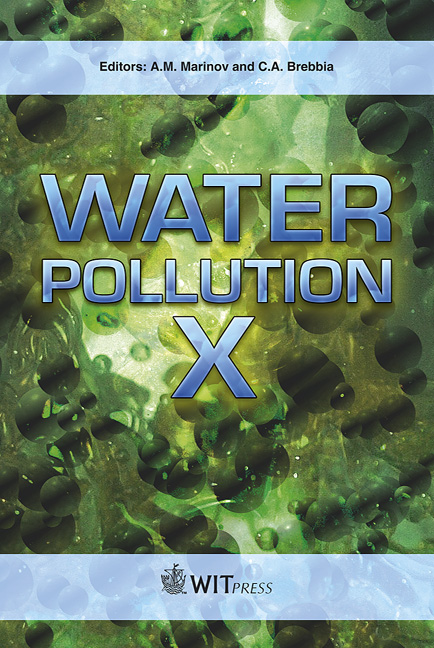High Density Sludge Process Applied To Metal-containing Effluent
Price
Free (open access)
Transaction
Volume
135
Pages
11
Page Range
289 - 299
Published
2010
Size
712 kb
Paper DOI
10.2495/WP100251
Copyright
WIT Press
Author(s)
P. Suvio, D. Sapsford, A. J. Griffiths, K. Williams, J. D. Davies & S. Maynard
Abstract
Large volumes of water are utilised during the operation of complex integrated steelworks. This usually results in the discharge of liquid effluents containing low concentrations of metals in solution and also the need to dispose of metal-rich sludges resulting from the treatment of these effluents. This paper presents the current performance of the final effluent plant at a large steelworks in South Wales, UK, focusing on the discharge effluent quality. In order to better understand the metal removal mechanisms a series of laboratory studies have addressed the precipitation of single metals and the co-precipitation of Zn with a range of other metals, including Fe and Cu, using sodium hydroxide as the alkali. Experimental data is compared to the predicted values using the geochemical model, PHREEQCi 2. Large sludge volume reductions were found for effluent treatment using the so-called High Density Sludge (HDS) process, which was operated on a pilot scale. HDS was achieved by mixing recirculating sludge and the feed water prior to adding the alkali, creating a so-called two stage neutralisation process, where recirculated sludge acts as a seed for further metals precipitation. Careful performance monitoring of the HDS process pilot plant was carried out in order to ensure suitable conditions for the formation of HDS. By the end of the trial HDS with high initial settling characteristics was being formed. Keywords: zinc, hydroxide precipitation, high pH precipitation, steelworks, High Density Sludge, settling velocity.
Keywords
zinc, hydroxide precipitation, high pH precipitation, steelworks, High Density Sludge, settling velocity





